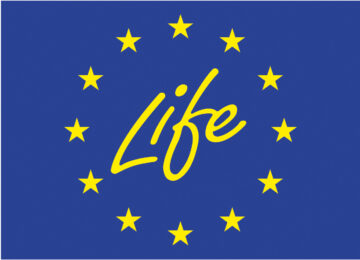Over the last five years the LIFE vultures initiative has helped to stabilise and grow griffon and cinereous vulture populations in the Rhodope Mountains of Bulgaria and Greece. Future rewilding efforts will build on the initiative’s achievements.
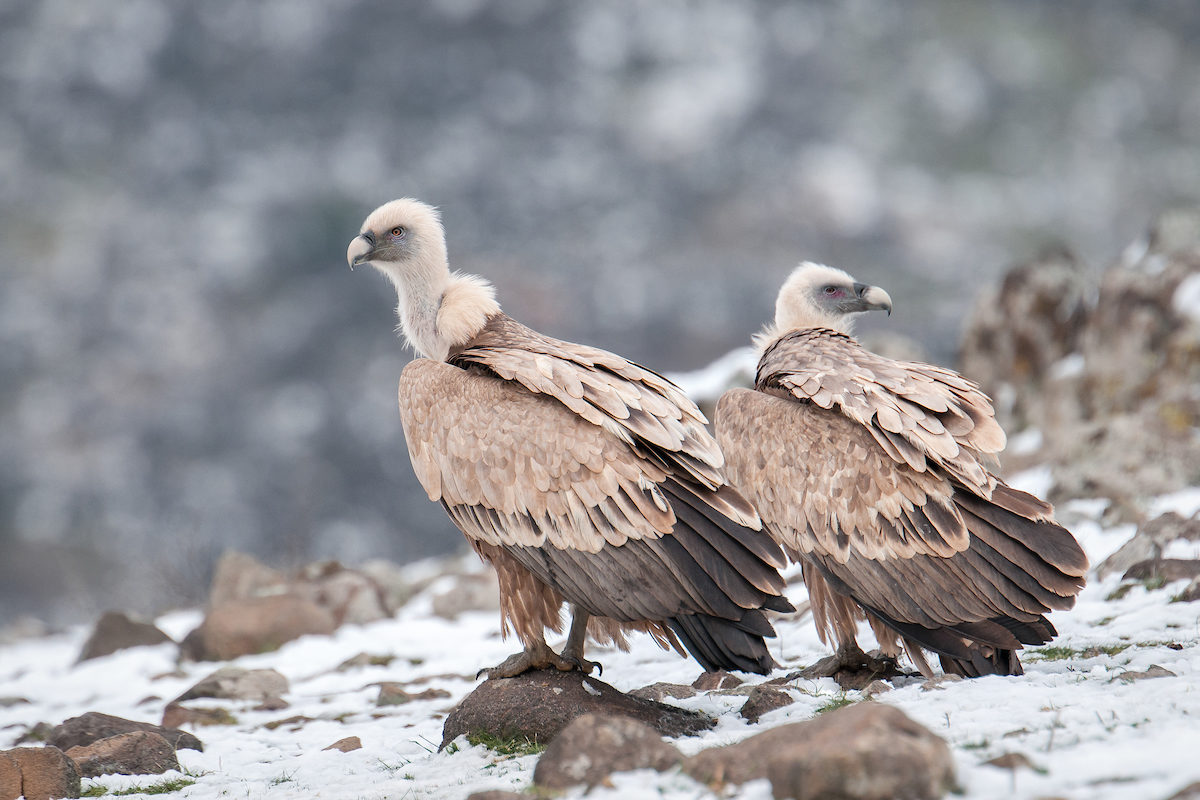
An upward trend
Bulgaria’s Rhodope Mountains are one of Europe’s last biodiversity hotspots and a vital breeding area for griffon and globally threatened Egyptian vultures. Across the border in Greece, the same mountain range is also home to the last remaining breeding colony of cinereous (black) vultures in southeast Europe.
With support from the European Union’s LIFE programme, the last five years have seen the Rewilding Rhodopes team, in collaboration with Bulgarian and Greek partners, take significant steps forward in stabilising and growing vulture populations in the Rhodopes. Efforts carried out as part of the LIFE Vultures initiative have seen the number of griffon vulture pairs in the Rhodopes increase from 91 in 2016 to 117 in 2021, while the number of cinereous vulture pairs has now stabilised at between 31-34 pairs.
A platform for the future
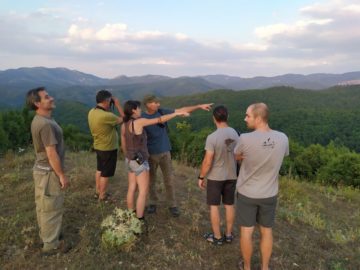
While the LIFE Vultures initiative has provided critical support, there is still a long way to go before both the griffon and cinereous vulture can be considered out of danger in the Balkans. With LIFE Vultures ending, the Rewilding Rhodopes team, together with the other members of the initiative, will continue their efforts to maintain and grow populations in both Bulgaria and Greece, with a wide range of measures including the reintroduction of cinereous vultures in the Bulgarian Rhodopes in 2021 or 2022. The overall aim is to enable both species to recolonise parts of their former range.
“The LIFE Vultures initiative, which has increased the griffon vulture population in the Rhodope Mountains and decreased threats to all local vulture species and other wildlife, has created a solid base for upscaling rewilding in the area,” says Deli Saavedra, Rewilding Europe’s Head of Landscapes. “The next step will be to bring back the endangered cinereous vulture in Bulgaria and to continue boosting deer densities through reintroductions.”
Supporting vulture comeback
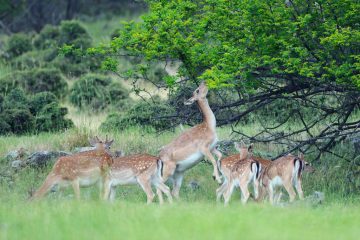
The LIFE Vultures initiative was developed and coordinated by Rewilding Europe, in collaboration with the Rewilding Rhodopes Foundation, the Bulgarian Society for the Protection of Birds, the Vulture Conservation Foundation, WWF Greece and the Hellenic Ornithological Society. Focusing on the Rhodope Mountains rewilding area in Bulgaria, as well as a section of the Rhodope Mountains in northern Greece (Dadia-Lefkimi-Soufli Forest National Park), it has seen a wide range of measures carried out to support the recovery and further expansion of the griffon and cinereous vulture populations. These have mainly involved boosting the availability of natural prey and reducing mortality from poaching, poisoning and collisions with power lines, which are all still negatively impacting vulture populations in the area.
A newly published layman’s report summarises the main achievements and activities of the LIFE Vultures initiative. In addition to the overall demographic trends listed above, these include:
- Releasing nearly 400 fallow deer and 50 red deer (this not only boosts the availability of natural food for vultures, but helps to create biodiversity-rich mosaic landscapes and reduces predation on domestic animals, which improves relations between people and wildlife)
- Founding the first anti-poison dog unit in Bulgaria (which has carried out 153 searches and patrols over the last four years)
- Insulating 197 electricity pylons and installing 152 diverters on power lines
- The fledging of 308 juvenile griffon vultures in the Bulgarian part of the Rhodopes over the last five years
- Tagging 27 cinereous vultures and 34 griffon vultures with GPS Transmitters, providing invaluable information about their movements and behaviour
- Establishing five feeding places (so-called “vulture restaurants”) in Greece, and organising 571 feedings in Bulgaria and Greece
- Constructing 15 artificial nests for cinereous vultures in the Bulgarian Rhodopes
- Organising a wide range of events, publications, videos and photo missions to promote rewilding and vulture conservation
- Mapping nests and determining population numbers, age structure and patterns of movement for griffon vultures in Bulgaria and Greece
Towards a wilder Rhodopes
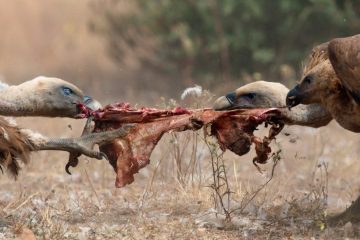
Cinereous and griffon vultures were once widespread across the Balkans (as were other vulture species such as bearded and Egyptian vultures). However, populations have suffered a long-term regional decline due to factors such as a decreasing availability of food, habitat loss, persecution and poisoning. In the Bulgarian Rhodopes, today’s griffon vulture population (117 pairs) has increased from a low of around 20 pairs in the mid-1980s.
The fact that vultures are making a tentative comeback in the Rhodopes is not only good news for the birds themselves. Vultures are keystone species, playing an essential scavenging role as recyclers of natural carcasses; the long-term aim in the Rhodopes is to discontinue vulture restaurants when there is enough natural food available for the birds to eat.
Vultures are also sensitive to ecological conditions: if a population is increasing, it is a good indication that the overall health of the local ecosystem is also improving. Vulture rewilding efforts will contribute to the creation of a wilder Rhodopes where nature and people flourish alongside one another in a landscape governed more by natural processes, such as natural grazing and scavenging.
Marking the occasion
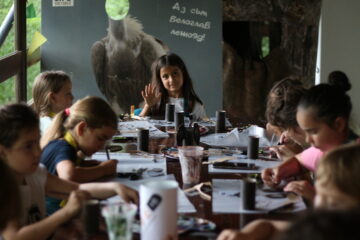
The successful completion of the LIFE Vultures initiative was marked with a three-day vulture festival at the beginning of July. The event, which was organised by the Rewilding Rhodopes team, was attended by more than 500 people, including students, partners, stakeholders, tourist and visitors from across Bulgaria. Around 100 children took part in various creative and educational workshops related to vultures and a drama production, while wildlife photographer Bogdan Boev gave a popular lecture on his work, which included advice on when and where to photograph birds and other animals.
A European Rewilding Network (ERN) webinar also took place at the end of July, focused on vulture comeback in the Rhodopes. Featuring presentations from Rewilding Rhodopes team leader Stoycho Stoychev and communications manager Nelly Naydenova, the 40 participants learned about the ongoing work of the Rewilding Rhodopes team years to reduce vulture mortality and recover populations of griffon and cinereous vultures.
Want to know more?
- Rewilding Rhodopes
- LIFE Vultures initiative
- LIFE Vultures layman’s report
- See vultures in the Rhodope Mountains with the European Safari Company

